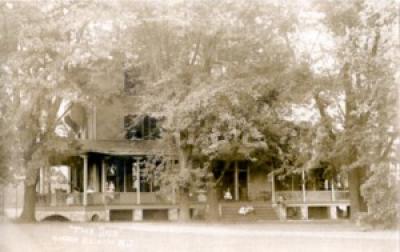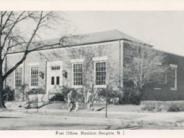History
The land that was to become Haddon Heights was settled in 1699 when a one-room, brick house was constructed, probably by John Hinchman (1019 N. Park). In 1713, John Siddon built a farmhouse near Hinchman (1212 Sylvan).
John Thorn Glover dammed King’s Run, constructed a mill race and fulling mill on this property before 1776.
Jacob Hinchman built a frame dwelling no later than 1720 that was later enlarged by Revolutionary War hero Col. Joseph Ellis. New Jersey Governor Joseph Bloomfield purchased this property (1009 Sycamore Street). Members of the Glover Family built a farmhouse around 1703 and enlarged it with a matching addition circa 1750 (1908 New Jersey Avenue).
Benjamin A. Lippincott, in 1890, was allowed to construct a passenger station in the center of his land for the Atlantic City Railroad Company. Then Lippincott, with Charles Hillman, filed a grid street plan with Camden County to develop a community. They named it Haddon Heights because of its proximity to Haddonfield and its high elevation.
Large, comfortable, Princess Anne four squares and colonial revival type houses were constructed that appealed to prosperous middle-class families moving from the cities. By 1904, Haddon Heights was large enough to incorporate as a Borough, with Lippincott being elected as Mayor. A small downtown grew near the railroad and the White Horse Pike and eight churches and a synagogue were built.
An area of old Center Township, known as Fairfield Estates, voted in 1926 to become part of Haddon Heights. This land was developed for more single-family housing through the 1940s and 1950s. Even though rail passenger service ceased in July 1965, Haddon Heights remains a typical turn of the 20th-century railroad suburb with tree-shaded streets and comfortable homes that still "appeal to the inhabitants and the observer of a class bordering on, if not quite, exclusive."



